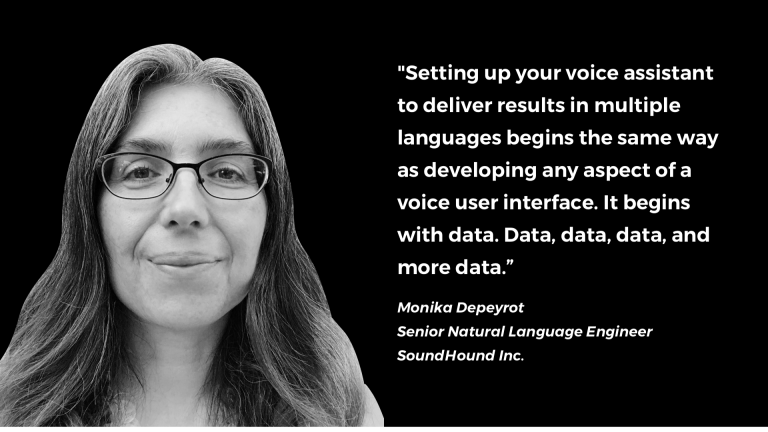Even making one small change can deliver a slightly better result. From there, another change may lead you to an even better result. Combining those two changes may improve the result or actually result in a worse outcome. While that may be counterintuitive, allow the data to lead you and be open to accepting unexpected results and continue to make changes that result in better outcomes. It’s an iterative process and should be ongoing, even after the voice assistant is deployed.
Step 4 – Avoid common misconceptions and missteps in VUI design
Conflicting data sources
Know your data.The more data the better. Although this is true, some data sources can pull your results downwards. If that happens and you have different training data sources, try training with each source separately. Then, combine them and check to see which set performs best. Adding data, even of lesser quality, will still yield better overall results in most cases. If you continue to get disparate results, you might want to consider eliminating the lesser data source to avoid confusion.
Overfitting
Another common error results from overfitting. To avoid this common error, we keep 10% to 15% holdout data for testing. This is very convenient as it’s test-ready data. In addition, it’s also useful to have independent test data that can help uncover misses in the training data or overfitting your model. To give a concrete example, if we have a phonetic transcriptions dictionary with no alternative transcriptions for Dutch words ending in -en or Swedish plurals ending in -or we will not only never train to generate these alternative transcriptions, but we will not even know that we are missing transcriptions of valid pronunciations. In both these cases having independently compiled test material will help to catch these omissions and will ultimately tell you more about how your model is performing in comparison to “real life” data.
Eureka moments
Keeping an open mind can lead you to some discoveries which become “Eureka” moments—those times when you realize you’ve discovered something you hadn’t anticipated or were even looking for. They are really like little treasures and they often come from looking at results. When you begin testing, you may have an idea of what the results should be. But when you look at the result and it’s not what you were expecting, don’t dismiss it. Use it as a “Eureka” moment to learn something new. Look at the result or the evolution of different data sets and draw conclusions from what you see, not what you expected to see.
Once you’ve had a Eureka moment, use your knowledge to design new experiments that will give you a hint as to how to use the system better, determine a new direction, review old data that led to a deadend before, and result in a clearer picture overall.
Solving for languages in a voice assistant is more complicated when natural language understanding (NLU) and automatic speech recognition (ASR) live as two separate components of the same system. In this traditional voice AI technology configuration, it takes a long time to build the query-understanding module for a new language, and there are many opportunities for errors.
Advanced voice AI platforms like Houndify have eliminated many of the challenges of multiple language acquisition for voice assistants with speech engines that process speech in real-time, closely approximating how humans think and speak. By eliminating the traditional two-step process of speech recognition and response, and by providing an existing library of language support, brands can easily and quickly build customized multilingual voice assistants with the Houndify platform.
Developers interested in exploring Houndify’s independent voice AI platform can visit Houndify.com to register for a free account. Want to learn more about our company or our solutions and technology? Talk to us about how we can bring your voice strategy to life.
Monika Depeyrot is Senior Natural Language Engineer at SoundHound Inc. She is passionate about discovering how the mechanics of human language can be represented in a way that computers can understand. She also loves hiking and the outdoors.









